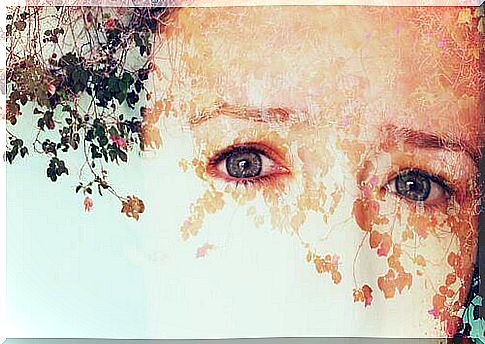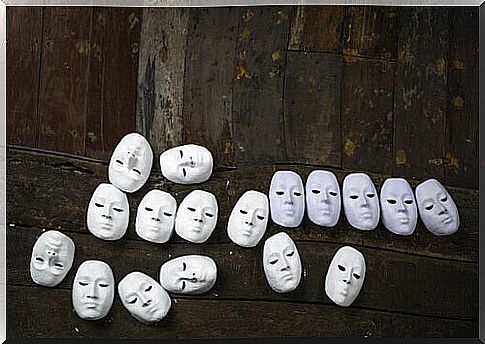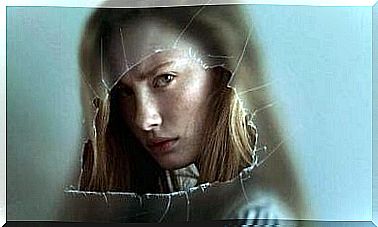Prosopagnosi: I See You And I Know You, But I Do Not Recognize Your Face

Prosopagnosia is a rare disease that currently affects 2.5% of the population. It has affected some very famous people, such as actor Brad Pitt, co-founder of Apple, Steve Wozniak, and neurologist Oliver Sacks, who recently passed away. People with this disorder are not able to recognize faces, including their own. Have you ever thought about what your life would be like if you had “face blindness”?
Imagine you are walking your dog and you meet your best friend, but you do not say “hello” because you do not know who she is. Imagine saying good night to your children, but you can not recognize their faces. Or going to the office, but your employees seem like complete strangers.
For those with prosopagnosia, the day is complicated. And in fact, people with this disorder are often unaware that they have it.
Who are you? And who am I?
This disorder not only impedes facial recognition of close family, friends and acquaintances. It can even affect the identification of emotional expressions and gender. All faces look the same, without distinction.

Therefore, a person in the social circle of a person with prosopagnosia may feel hurt by him. They have shared so many experiences, and now she does not even recognize her. In fact, actor Brad Pitt has said this. He said that because of his suffering, people who are very close to him have described him as self-centered and arrogant.
In the most severe cases, the person is not even able to recognize himself in a mirror or a group photograph. This can have very negative consequences. Not only in interpersonal relationships, but also in the workplace. It can affect self-esteem and even cause depression.
Some people think that it is a memory problem
The term comes from the Greek prosopon (face) and agnosia (lack of knowledge). People who suffer from it may have perfect vision. They can remember and recognize most objects reasonably well. That’s why, just like a healthy person, they know who their parents are, their children’s favorite color, what their partner likes and dislikes, what they ate yesterday, or how well their roommate sings.
Although the areas of the brain that process faces are in constant interaction with neural networks of memory, it is not a memory problem per se. It is more of a disease that is specifically related to faces.
We perceive a general face model
Before they learn to talk or even babble, babies instinctively discover faces. When they are four months old, they treat faces in a clear way. This is due to the fact that faces are extremely informative. Faces reflect emotions, identity, gender and ethnicity.
A person with prosopagnosia can identify different parts of the face (nose, eyes, mouth, etc.). But they are not able to remember their exact location on the face. Nor can they put together a complete facial structure. They can not convert facial features into a unique pattern of features. They cannot link facial features to a person’s identity.
This happens because faces are treated together, not in parts. That is, we cannot identify anyone with just their eyes or their mouths. Because we can get so much information from a person’s face, we are able to capture everything at once and create a general model of a face.

The solution is to use contextual clues
An inability to recognize faces is the characteristic of prosopagnosia that stands out the most. However, in some cases, people with the disease can recognize the faces of people close to them. They can do so as long as the faces stand out from the crowd due to a special feature.
In this way , they use different contextual clues and strategies to ease potentially embarrassing situations. They can find out who they have in front of them by noticing a characteristic detail of the person. Some examples are: noticing hair color or glasses or the way someone walks. Other clues are skin tone, unique scars, moles, or voice.
The more noticeable the move, the faster and easier it is to identify them. Very thick eyebrows, ears that are very far apart, neon green glasses, strong perfume, etc. All these features can help a person with prosopagnosia to identify those around them.
Were you born with prosopagnosia?
This disease can present at birth. It can be inherited and passed down from generation to generation, although this is not common. In most cases, brain damage in both hemispheres causes this disorder. This may be the result of a stroke or a brain tumor. More often it is the result of skull-related trauma or infections such as encephalitis (encephalitis) that affects the central nervous system.
Facial perception requires cognitive processes in different areas and brain structures. However, there is one area of the brain that is particularly responsible for face recognition: the Fusiform Face Area (FFA). It is located in the temporal lobe, in the Gyrus fusiformis.

What types of treatments are there?
There is no effective treatment for prosopagnosia. Nevertheless, physicians can train their patients to use contextual clues. Experts also recommend that the people around them make their daily lives as easy as possible. For example, by saying the name of everyone present, avoiding large crowds and parties, and movies with too many characters.
Now you know a little more about this little known disease. It affects quite a few people and makes them blind to faces. What do you think about that?









